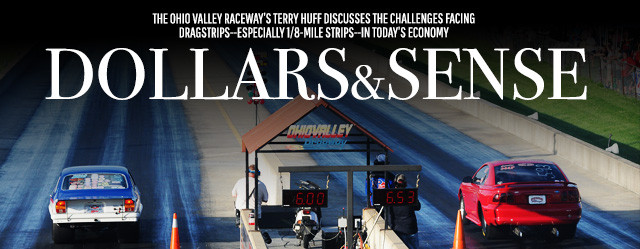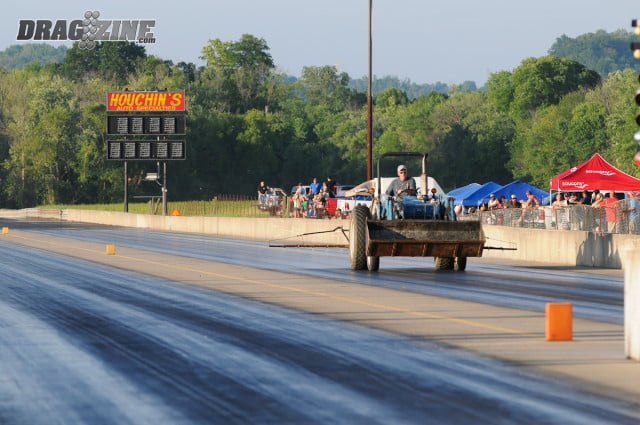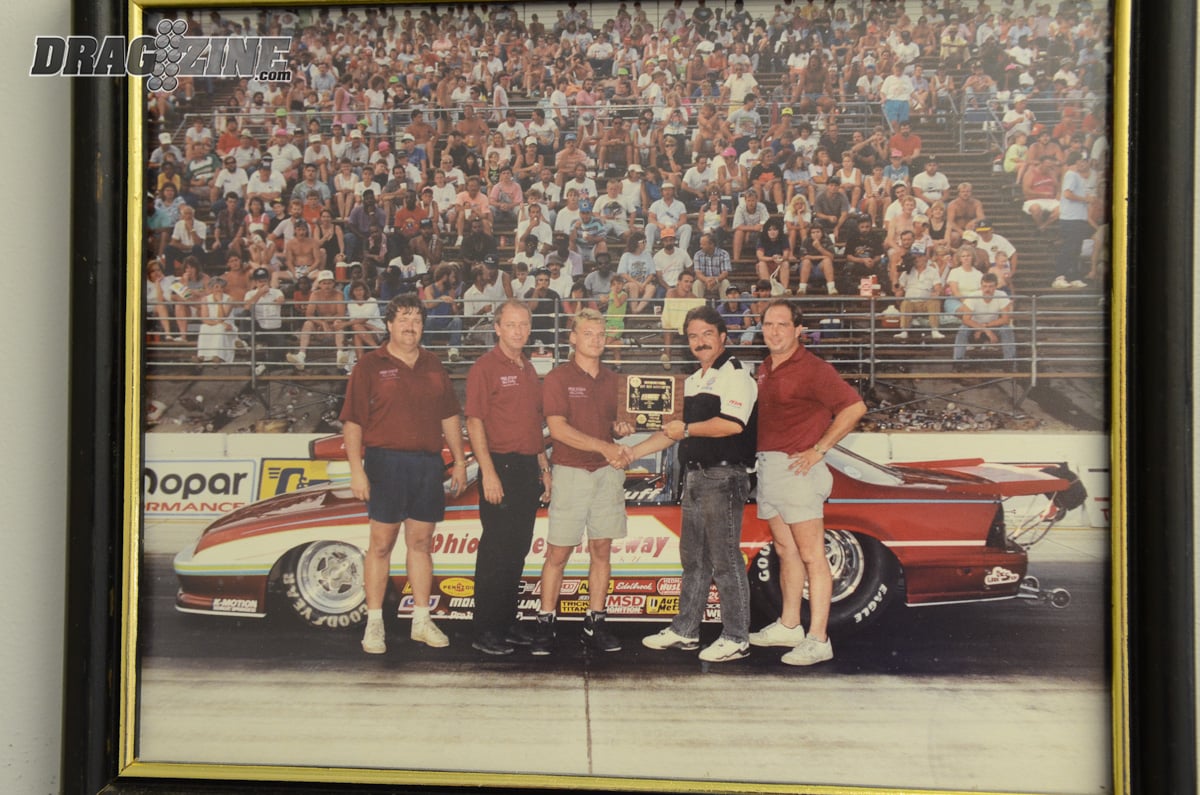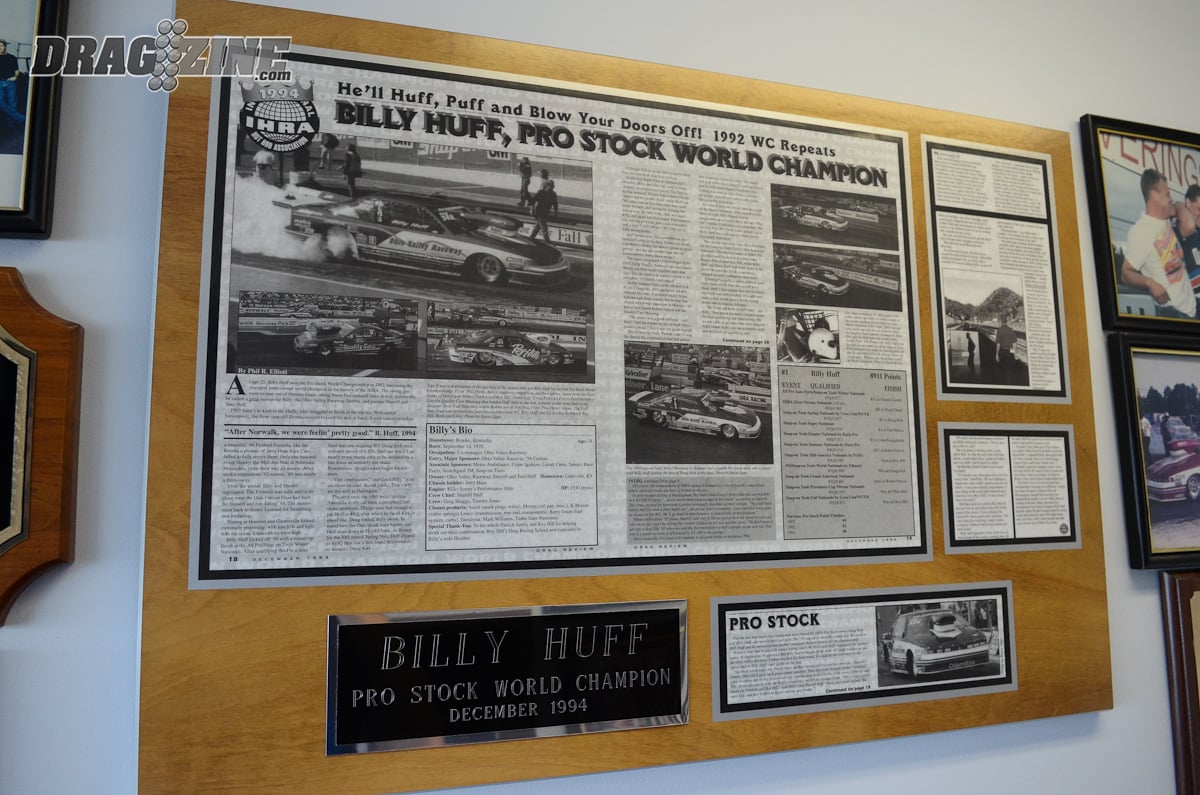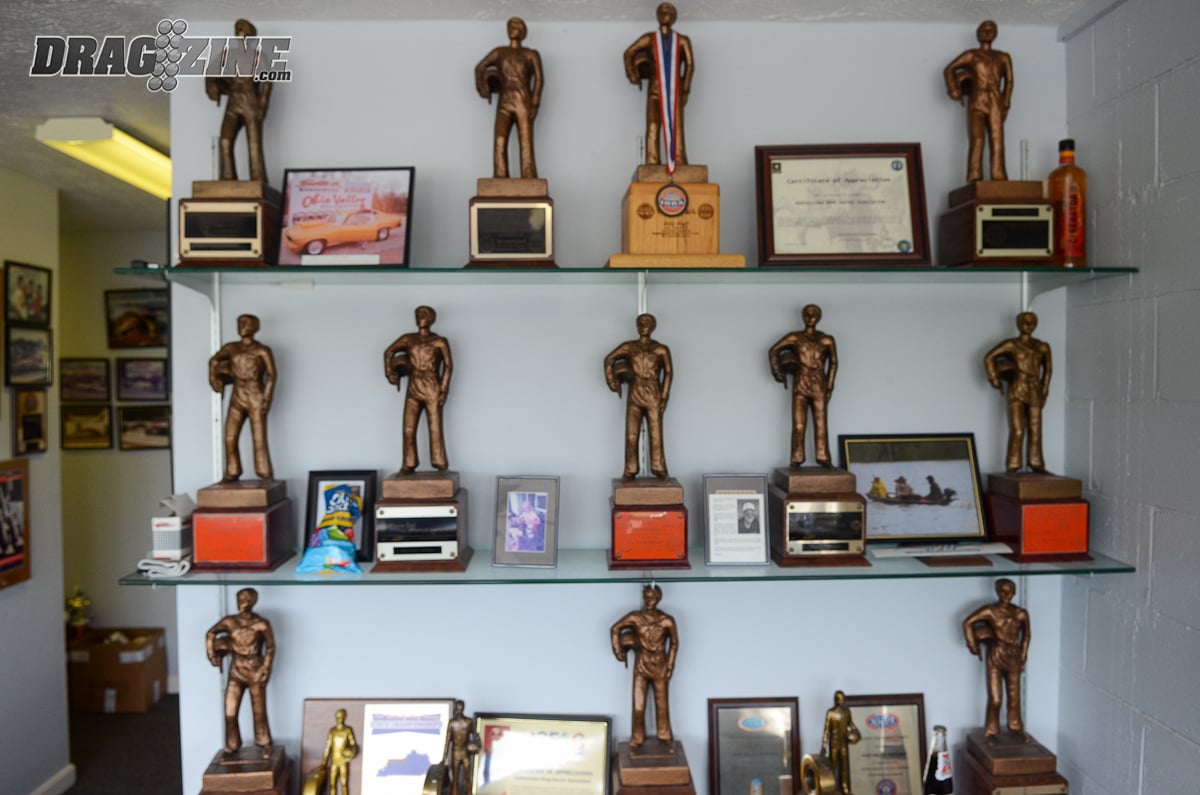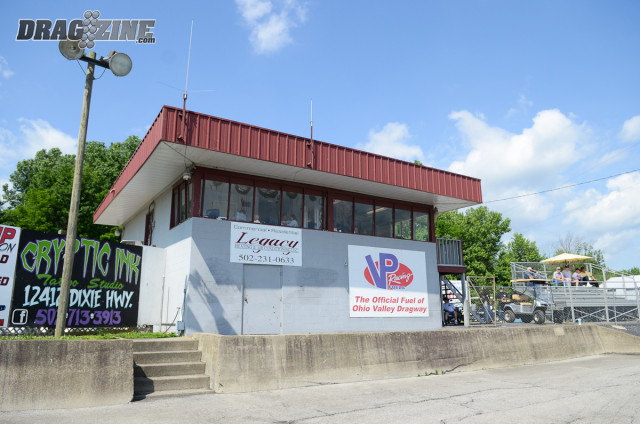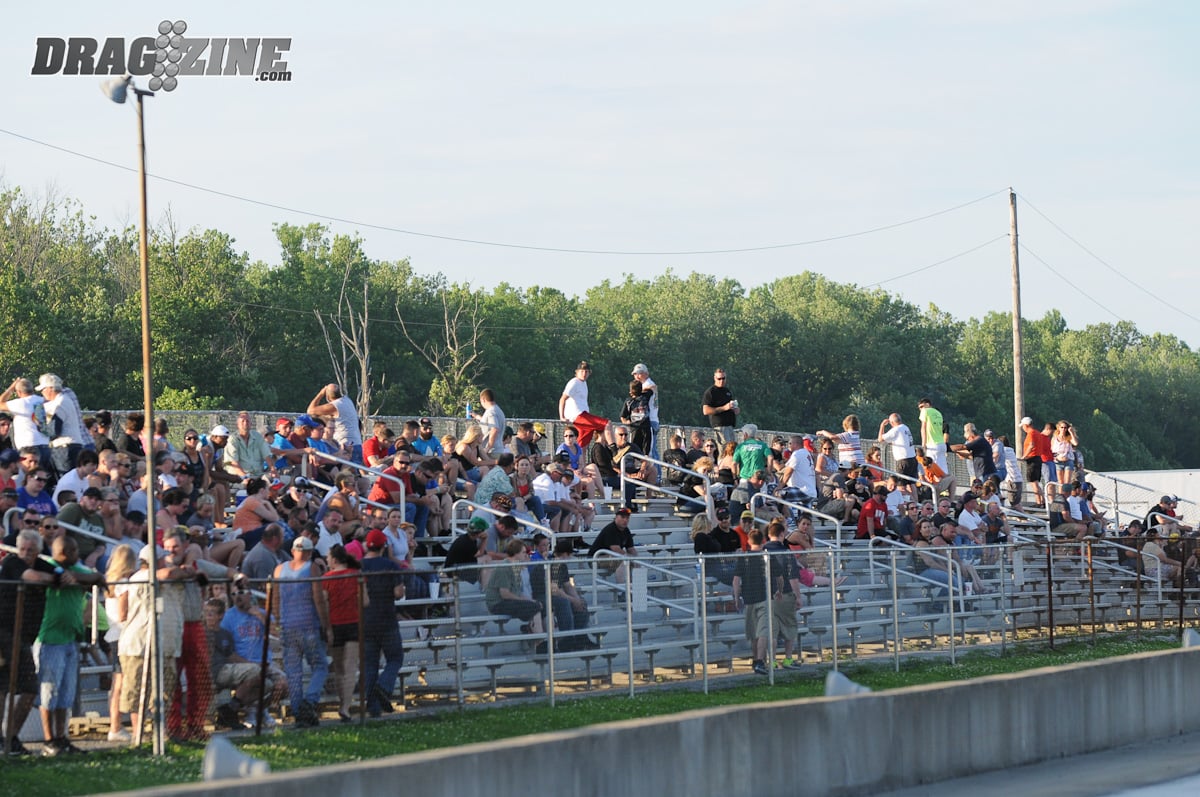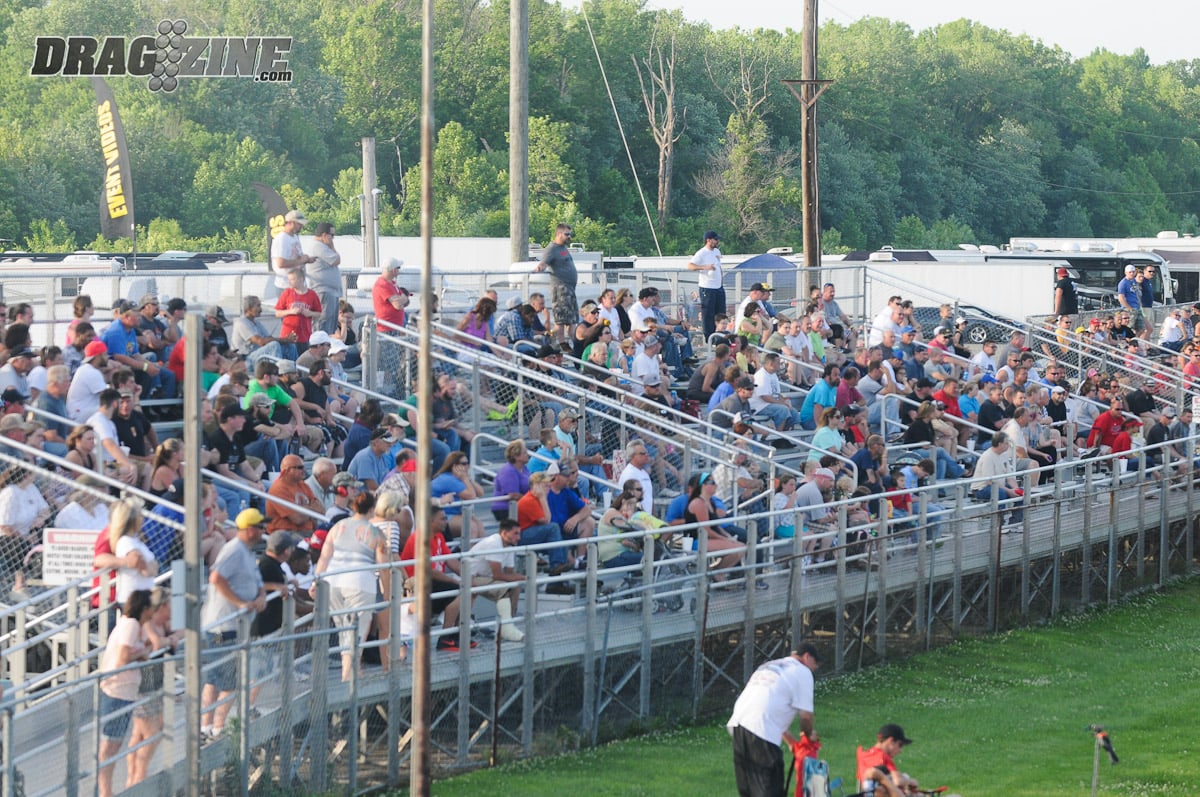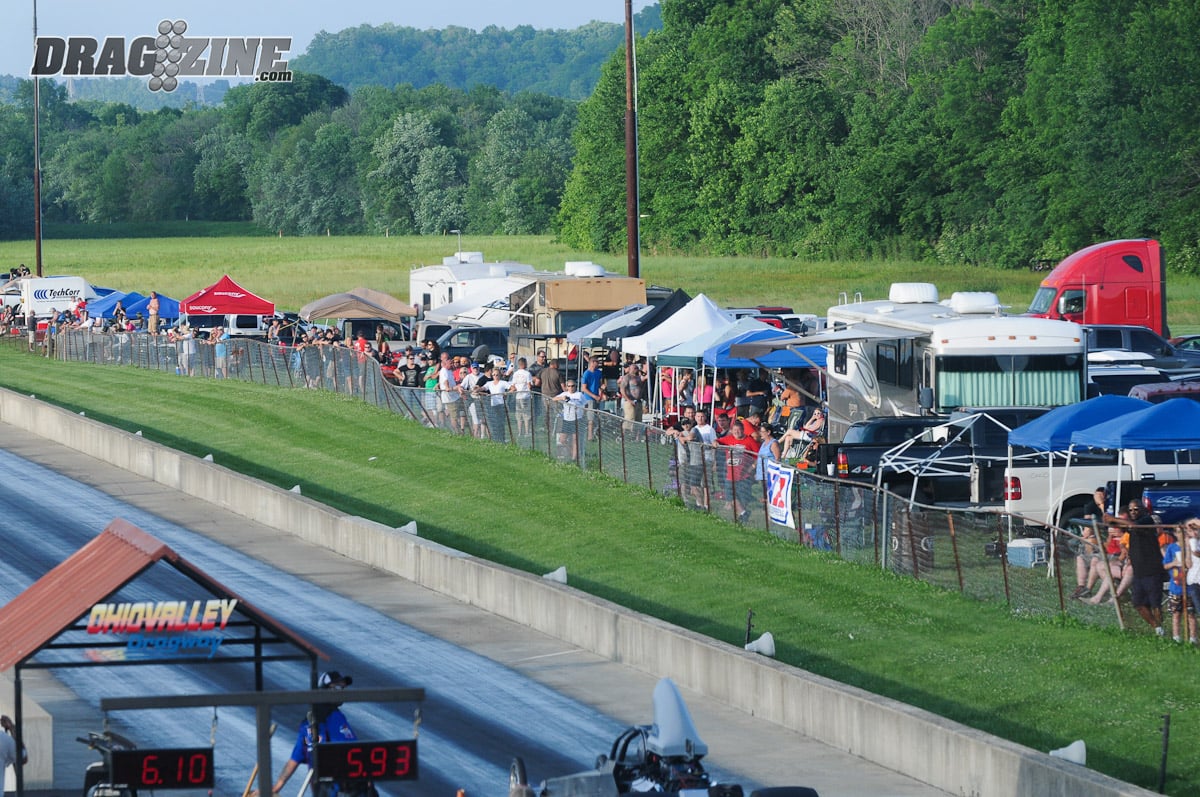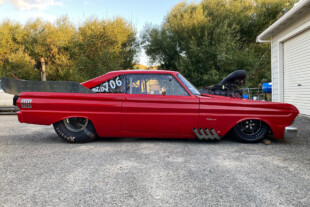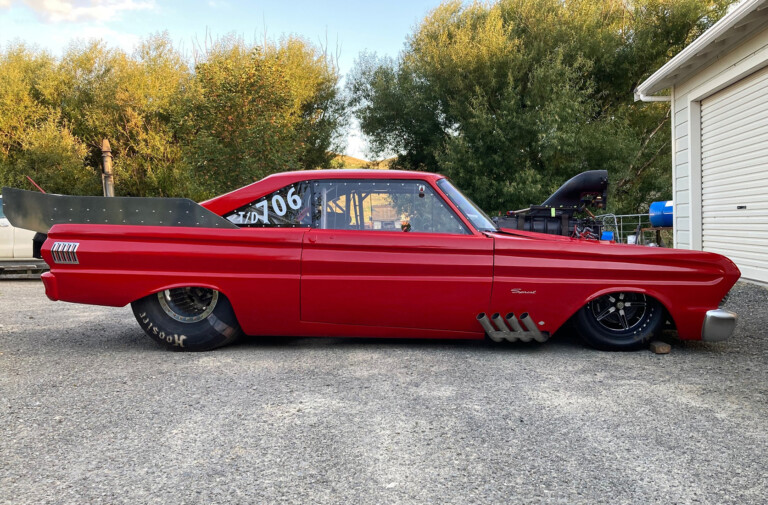It’s hard to argue that the Ohio Valley Raceway, a staple of drag racing in the state of Kentucky for more than half a century, is among the few remaining facilities of its kind. The last of a dying breed, if you will.
Track manager Terry Huff, speaking humbly but matter-of-factly, tells us he “never really thought of it that way” as he takes a short break from phone calls, planning, and preparation for an upcoming Pro Modified race, one of several defining events on the 1/8-mile track’s annual racing calendar.
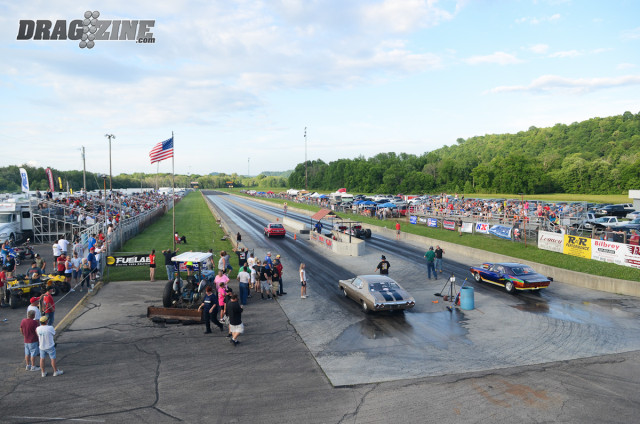 In the most difficult economic times that our sport has seen, Ohio Valley soldiers on without the luxury of an NHRA national or Lucas Oil Series event, a major radial tire showcase, or other traveling series that can present a financial windfall for a track operator and promoter. Instead, it remains because of the sacrifices and smart, calculated decisions of two men who love drag racing — and the thought of not having to punch a time clock and answer to a boss — too much to do anything else.
In the most difficult economic times that our sport has seen, Ohio Valley soldiers on without the luxury of an NHRA national or Lucas Oil Series event, a major radial tire showcase, or other traveling series that can present a financial windfall for a track operator and promoter. Instead, it remains because of the sacrifices and smart, calculated decisions of two men who love drag racing — and the thought of not having to punch a time clock and answer to a boss — too much to do anything else.
Terry, the nephew of track owner and longtime sportsman drag racer Sherrill Huff, along with Sherrill’s son Billy — who famously won the 1992 IHRA Pro Stock championship as a driver — operate the track and handle the day-to-day chores. Sherrill, now in his 70s and retired, lives a slow-paced life in Florida and “will call when he gets bored or wants to bitch about something,” as Terry puts it.
“He stays involved and he knows what’s going on,” Terry continues. “Any sum of money being spent has to go through him.”
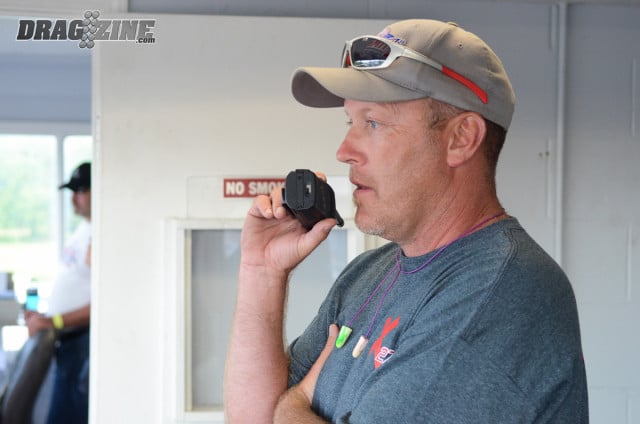
Terry Huff, the nephew of track owner Sherrill Huff, manages the day-to-day activities of Ohio Valley. On race day, you’ll find him constantly on the move, making sure everything from track prep to lane calls are handled in a timely fashion.
Brothers Jim and Wayne Williams opened Ohio Valley in a certifiable floodplain in 1965, a stones throw from the Ohio River and a short drive from the then-century old Fort Knox military post. It changed hands two times, in 1970 and 1985, before Sherrill jumped at the opportunity to buy it in 1988. Under the Huff family’s ownership for 27 years, Sherrill’s son and nephew have known little else in their adult lives but running a dragstrip.
It’s harder today to make money than it was 10 years ago. There are race tracks shutting down about every day. It’s hard, its very hard right now.
Today, the financial challenges are aplenty. But through their efforts, the Huff family still puts food on the table and a roof over their heads running a race track. And, that’s something a dwindling few are able to do — and much less willing to try — in this day and age.
“It’s harder today to make money than it was 10 years ago. There are race tracks shutting down about every day. It’s hard, it‘s very hard right now,” Terry says.
Rather than the 2008 economic downturn, which negatively affected much of the industry but was a mere speed bump for the Huffs, Terry points to Hurricane Katrina in 2005 as a turning point for Ohio Valley. It was in the months after the storm made landfall in Louisiana, sending fuel prices rocketing upward, that they began to notice a decline in racers and spectators across the board.
“We used to get a lot of kids here for our test-and-tune nights, and we only charged five dollars a head to get in. When the gas prices shot up, it became harder for families to justify giving their kids a few bucks to go out and have fun with their buddies on a Wednesday night.”
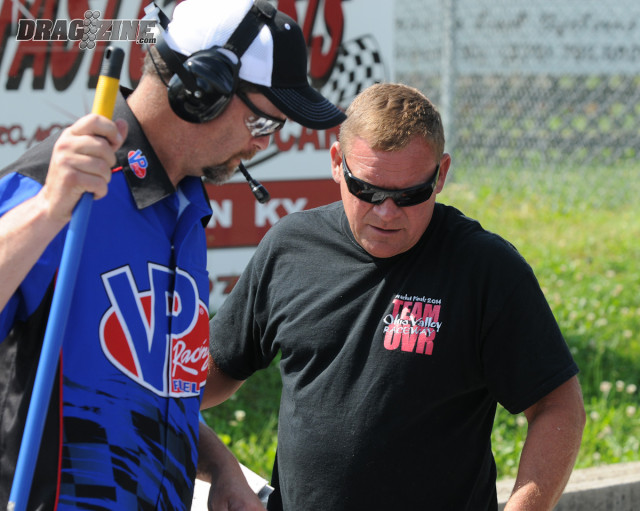
Billy Huff, right, the son of Sherrill Huff, has been involved with the track in a full-time capacity since the family acquired it in 1988. Billy, a former IHRA world champion driver, is very hands-on on event days, from working the starting line to ensuring the concessions, the staging lanes, the gate, and everything else run like a well-oiled machine.
In recent seasons, however, things have leveled off from their downward slide, providing the Huffs with some stability as they plan their events and allocate funds. That leaves them with the one variable they can’t predict, and that’s the weather. “We’ve got terrible weather around here,” Terry says, and with their position smack dab in a floodplain, that means when it rains, it pours, both literally and figuratively. Beyond simply missing races and profits — their season often sputters to a start until late May or early June due to weather — the flooding adds up to dollars and cents taken out of the coffer for repairs. Flood insurance is simply too expensive for the Huffs, and that leaves them with the burden of any flood damage. And, flood damage they’ve had, with water covering every structure on the property but the top floor of the tower in 1997.
The tpwer at Ohio Valley is filled with awards from Billy and Sherrill's years spent touring the country with the IHRA. The father and son duo won a pair of Mountain Motor Pro Stock world championships before trying their hand at the 500-inch NHRA arena in the mid-1990s.
“I haven’t really sat down and compared numbers or anything, but things have definitely leveled off the last few seasons. Our test-and-tune nights haven’t picked back up like they used to be, but I know the racers are still out there. In the spring or fall, when the weather is nice, they come out,” Terry says. “Like anything else, you have racers that quit for a month or two, they get out of the habit of going and into the habit of something else. Some of them, their kids are getting older, their wife wants to go the lake and they don’t have time to race. For whatever reason it may be, I know they’re out there and they still have their cars, they just aren’t coming.”
Like anything else, you have racers that quit for a month or two, they get out of the habit of going and into the habit of something else.
“At our Outlaw races, when we open the gate, and as long as we don’t get rained out before the first round of eliminations, we’re out about $18,000,” Terry says. “That includes the purses, the insurance, personnel, and all of that. Once we open that gate, we just have to hope people come.”
Ohio Valley has struggled, as Terry tells us, to gain sponsorship for its events, because of its length. “I’ve talked to a lot of the big companies, and they look at an 1/8-mile facility and they don’t want anything to do with it. I’m pretty confident we’ve got one of the nicest 1/8-mile tracks in the country, if not the nicest. Hell, we’re probably better than most 1/4-mile facilities.”
Voted 1/8-mile track of the year on numerous occasions, this recognition is owed to the dedication of the Huff’s and the product — the track– that they’ve presented for NHRA and IHRA racers.
While other tracks boast a number of major events, Ohio Valley relies heavily on its bracket racing program.
Short of sponsorship, he insists that spectators are key.
“At our Outlaw races, we’ve got to have spectators or we’ll lose our butts. Don’t get me wrong, you’ve got to have have spectators no matter what you do, but with bracket racing, you hope to get enough cars to cover the purse there. We get a pretty good car count, and we let the racer determine the payout based on car count.”
If you have a good race, you don’t spend it all. You spend what you have to and you put the rest back. You have to be careful, because you truly are at the hands of Mother Nature.
“If you do reschedule, you’re probably on top of somebody else. If we get rained out, we don’t have it. There are some people out there that don’t care and they’ll put something on top of your race, but I’m not doing that. To be honest, it hurts both of you. If somebody does it, they’re probably just hoping you’ll say ‘to hell with it’ and cancel yours.”
With the inevitable situations always there, from low fan and racer turnout to rain — which Terry says will simply “kill them” — tracks like Ohio Valley have to be smart with their money, always keeping some cash in reserve should they fall on hard times.
“If you have a good race, you don’t spend it all,” Terry says. “You spend what you have to and you put the rest back,” he says. “you have to be careful, because you truly are at the hands of Mother Nature.”
One of the more expensive line items at any event is the electric bill, dictated largely by the use of the lights. “I can tell you, those lights aren’t cheap. If you sit there and watch that meter run, it looks like it’s going to come out at you when you turn the lights on,” Terry says with a laugh.
Beyond that is the insurance, which is a significant burden on the bottom line of any track. The insurance, according to Terry, is only in effect and paid for on days the track is open and running. Nevertheless, it’s a necessity that takes a major chunk out of the profits. The most expensive item, though, is the upkeep. By that, the Huff’s reference their need to stay ahead of the curve. Their most recent major project was ripping up the entire race track and laying down all new pavement, at a cost of over $300,000. Another significant chunk of money went into pouring new concrete guardrails and replacing the wooden grandstands with aluminum.
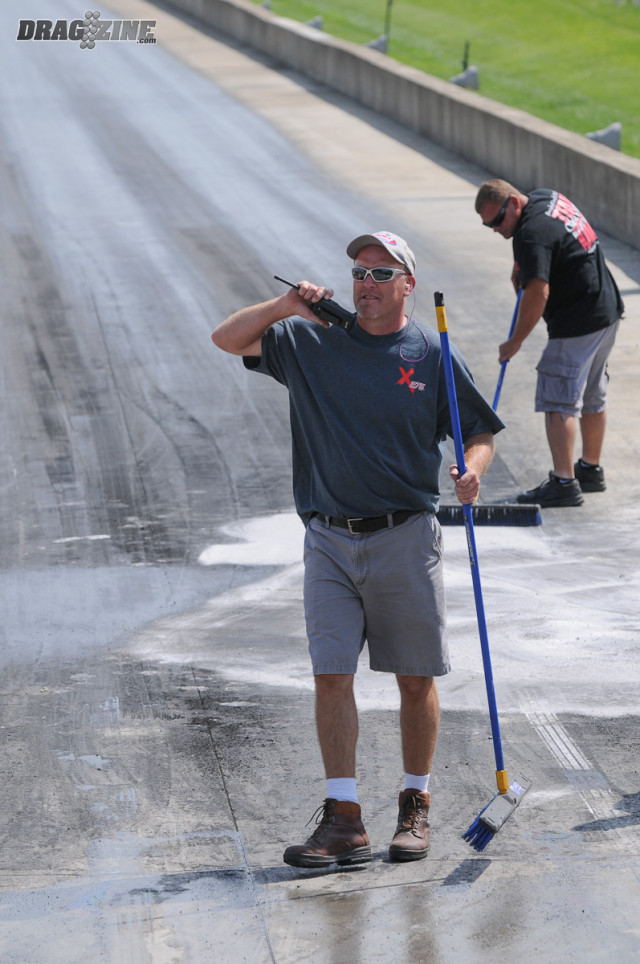 “A dragstrip is just like a black hole, it can take all the money you’ve got, and then some,” Terry says.
“A dragstrip is just like a black hole, it can take all the money you’ve got, and then some,” Terry says.
It all boils down to sacrifices for the Huffs.
“Trust me, we do without a lot,” Terry says. “I’m still driving a 1999 Chevrolet pickup with 300,000 miles. It just rolled over 300,000 the other day, in fact.” Then, with a pause, he says, “this place comes first.”
The track certainly comes first, and Terry and Billy have their fingerprint on virtually every project, and every inch of the property. If it needs repair or upgrading, they take care of it. He insists that economics the way the way they are, it’s the only way they know.
“If we need to re-wire the track, we rent what we need and we do it ourselves,” Terry says. “We’ll rent a trencher and go do it. Or, if we need a piece of equipment, we’ll buy it, use it for what we need it for, and sell it. We’ve got to. It’s not that we have a choice. Trust me, I’m getting too old for this stuff. But you just do it yourself. You’ve got to.”
A dragstrip is just like a black hole, it can take all the money you’ve got, and then some.
“I’ve been doing this so long that I’d like to just be retired right now,” he says jokingly. “I mean I love drag racing, I grew up around it and have been around it my entire life. Every time I think I don’t like it here anymore, I just think back to when I had to punch a time clock and then I like it here again,” he says. “I certainly put in a hell of a lot more hours here.”
During the season, Billy and Terry stay busy six days a week at the track, typically making every effort to rest, relax, and recharge on Sundays. That is, if the racing schedule allows. Such is the glamorous life of running a race track full-time.
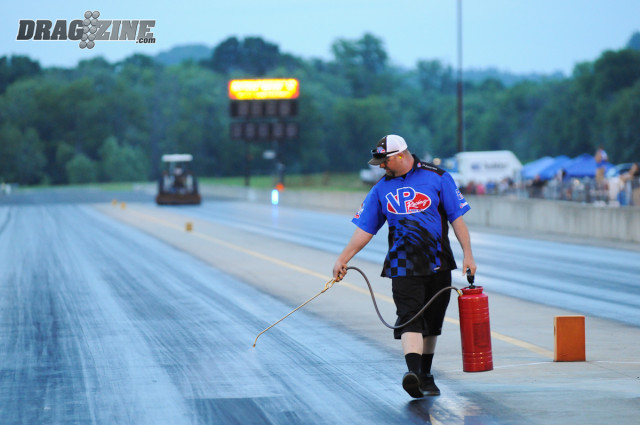
With Jason Rueckert (pictured) heading up the promotions, Ohio Valley has put their name on the map in radial tire racing with the now annual Prize Fight, bringing together many of the top racers in the nation. This years’ event saw a pair of world records broken and a slew of career bests set in competition.
“Every week, we’ve got grass to cut, weed eat, and then we have to work on the track. We probably spend eight to 10 hours a week just on the racing surface itself. Everybody thinks you just show up, open the gates, race, and don’t show up until the following week. But that’s not the case. It’s just me and Billy, and we do all the maintenance work here. There’s always something to be done.”
During the winter months, the work turns to planning, scheduling, soliciting sponsorship, and some years, the major projects — like repaving the entire racing surface. Terry says he begins the preparation for the new year in November, a process which generally keeps him busy all but a day here and a day there until February.
A highlight of Ohio Valley’s schedule the last two seasons has been the Prize Fight, promoted by VP Racing Fuels’ Jason Rueckert. It brings in many of the nation’s top radial tire racers and a sizable crowd. That event, along with their Door Car Shootout and the long-running Doorslammer Nationals, help to make the race track profitable at years’ end.
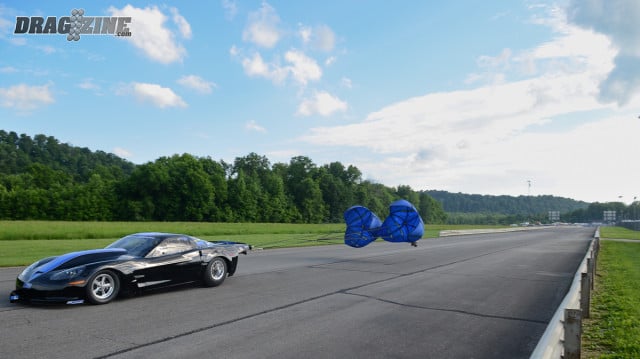
It’s hard to beat the scenery at Ohio Valley, as the track is nestled down into the tree-covered hills along the banks of the Ohio River.
Like Terry and Billy, the race track also goes without in order to remain viable. You won’t find a state-of-the-art timing tower with a plush media room and suites, but what you will get is one of the finest racing surfaces in the nation — a fact which was proven at this year’s Prize Fight when two world records were shattered and career best runs came in abundance.
On the regional stage, Ohio Valley — though its Prize Fight and Outlaw races — has become a player, albeit with plenty of stiff competition. Terry shares that he and Billy have plenty of thoughts in mind for growing the track and its programs, but those remain on the drawing board, due to cost, weather, and the track itself.
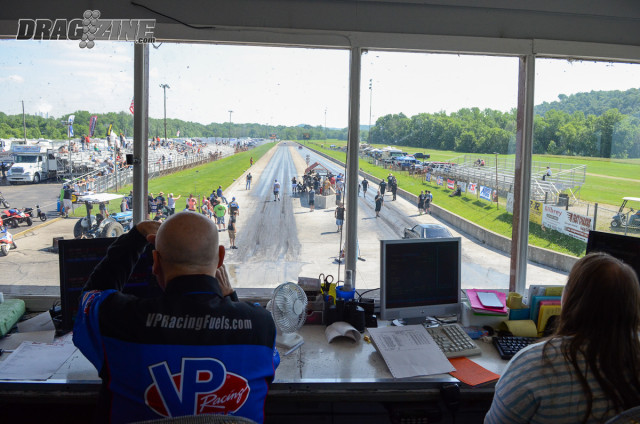 “I’m not sure that we can grow a whole lot, just because we’re 1/8-mile. We can’t get any of the big guys here, because they don’t want to run 1/8-mile. Could we get the PDRA here? Maybe, but I don’t know if our shutdown is long enough, nor are we big enough to hold all the people they bring in. I do think we can make the Prize Fight bigger and better. But being 1/8-mile really ties our hands on what we can do.”
“I’m not sure that we can grow a whole lot, just because we’re 1/8-mile. We can’t get any of the big guys here, because they don’t want to run 1/8-mile. Could we get the PDRA here? Maybe, but I don’t know if our shutdown is long enough, nor are we big enough to hold all the people they bring in. I do think we can make the Prize Fight bigger and better. But being 1/8-mile really ties our hands on what we can do.”
At the end of the day, the Huff’s continue to defy the odds, outlasting countless track owners and promoters, just like them, who have tried and failed; who have fallen at the hands of progress and eaten alive by an economy that doesn’t prioritize drag racing. But despite all of the challenges in their way, and all of the perfectly legitimate reasons to throw their hands up and walk away, Terry and Billy Huff open the gates every spring and do it all over again. And they’ll continue to do so until they can’t any longer.
“If we didn’t make money, we wouldn’t be here. Bottom line,” Terry says. “And there are a lot of drag strips that aren’t. It’s tough out there.”



